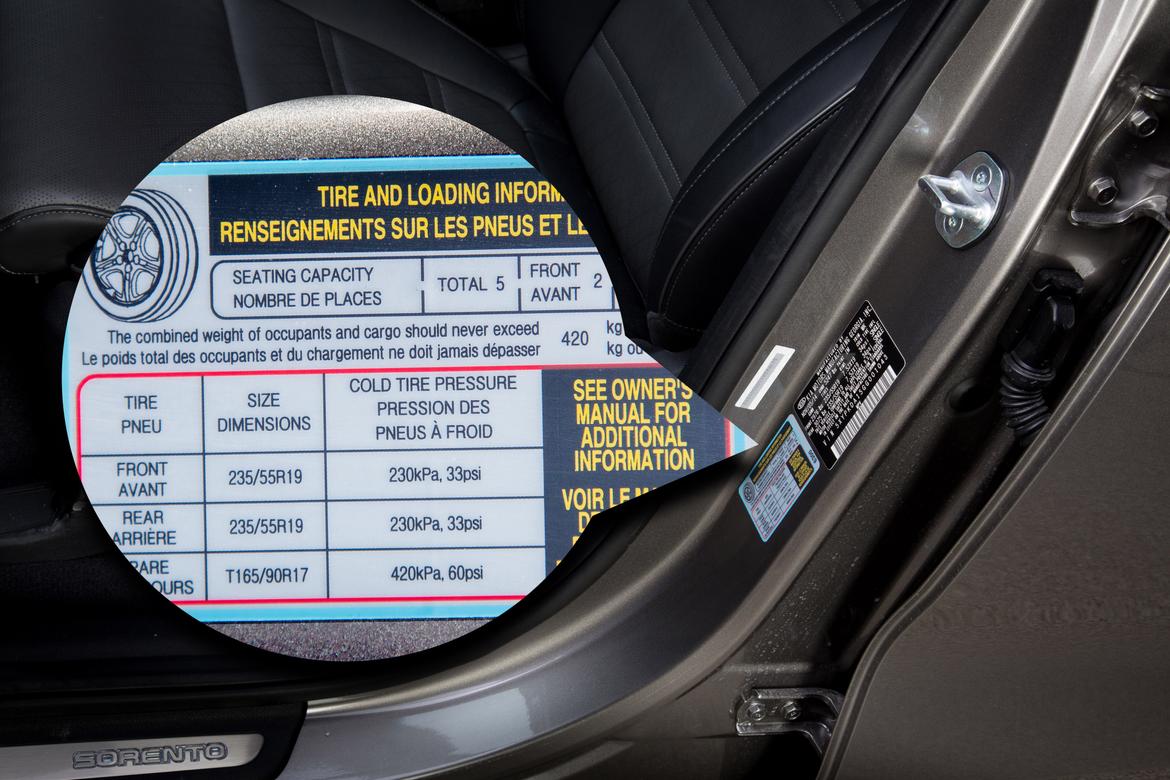
If you're wondering why your gas mileage has seemed a little lower than normal lately, or why your steering seems a little sluggish when you're behind the wheel, or even why your car just seems to be sitting closer to the ground than normal, it's going to be helpful to start with the only components of your vehicle that should be touching the road: the tires. You might have an issue with inflation.
Having the correct tire pressure is extremely important for getting good gas mileage and the most life out of your tires. Your car has a recommended tire pressure that will give the best gas mileage, handling and tire life for that car — and it's written right on the vehicle's door. That's the one you should follow when filling them up with air to the recommended pressure, measured in pounds per square inch, or psi.
On newer cars, the recommended tire pressure is most commonly listed on a sticker inside the driver's door. If there's no sticker on the door, you can usually find the specs in the owner's manual. Most passenger cars will recommend 32 psi to 35 psi in the tires when they're cold. The reason you check tire pressure when they're cold is that as tires roll along the road, friction between them and the road generates heat, increasing both the temperature and the air pressure. For the most accurate reading (not to mention the most consistent one), make sure the car has been sitting overnight or at least has been parked for a few hours.
Do not inflate your tires to the pressure listed on the tire itself. That number is the maximum pressure the tire can hold, not the recommended pressure for the vehicle. Tricky, huh?
Overinflation of your tires will give you a bouncy ride and an ill-handling car, while driving on under-inflated tires can cause premature wear from increased friction. Either way, not having your tires inflated to their recommended pressure will negatively affect tire wear and vehicle performance — and will definitely affect your maintenance schedule when it comes to replacing them.
For more on checking the tire pressure of your vehicle, watch the video below.
's Editorial department is your source for automotive news and reviews. In line with 's long-standing ethics policy, editors and reviewers don't accept gifts or free trips from automakers. The Editorial department is independent of 's advertising, sales and sponsored content departments.


